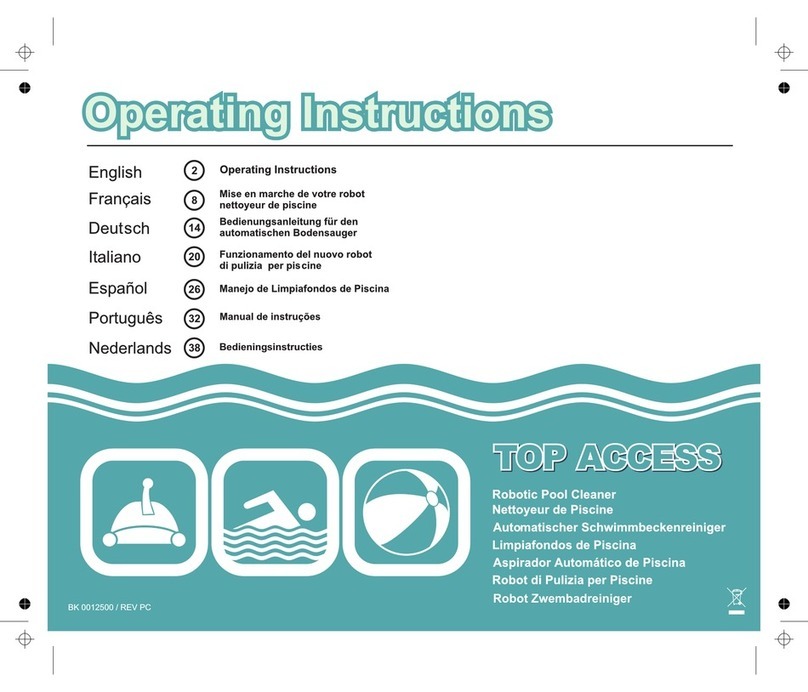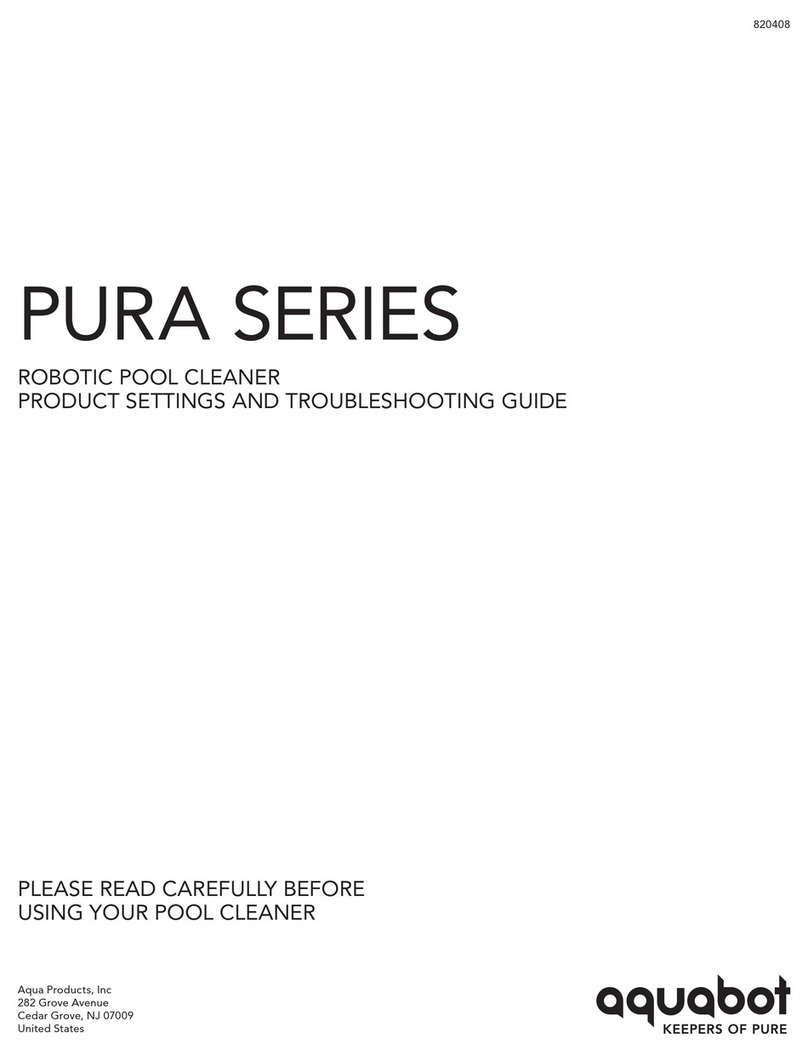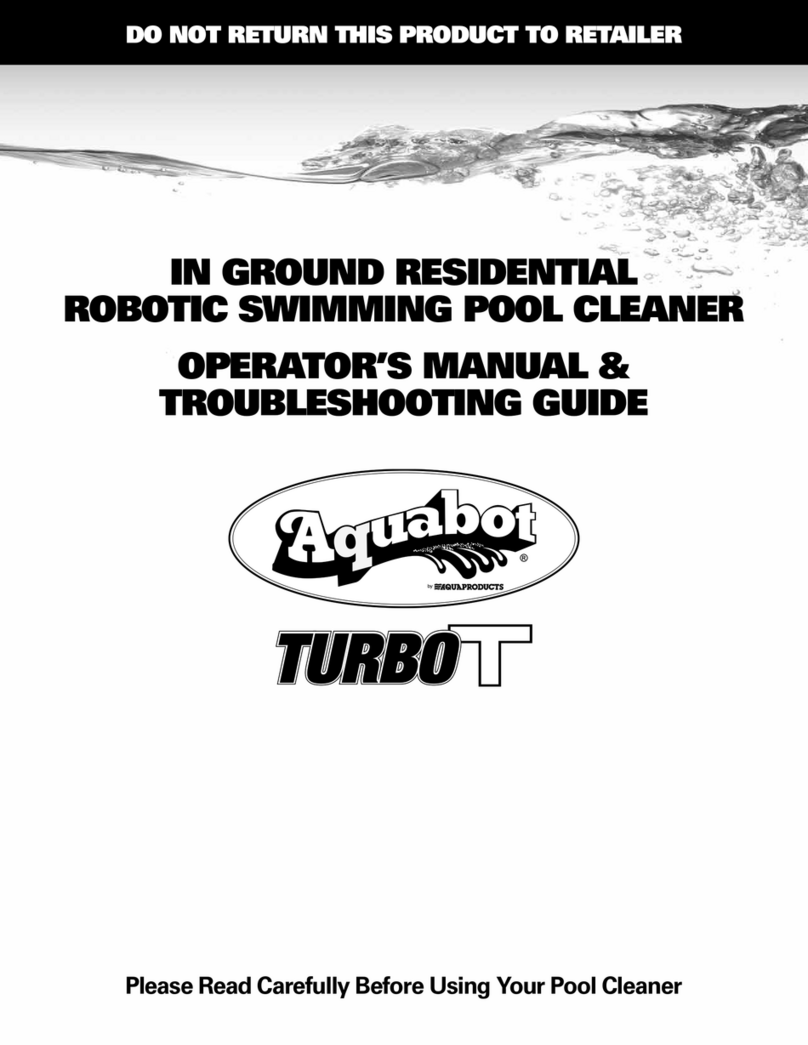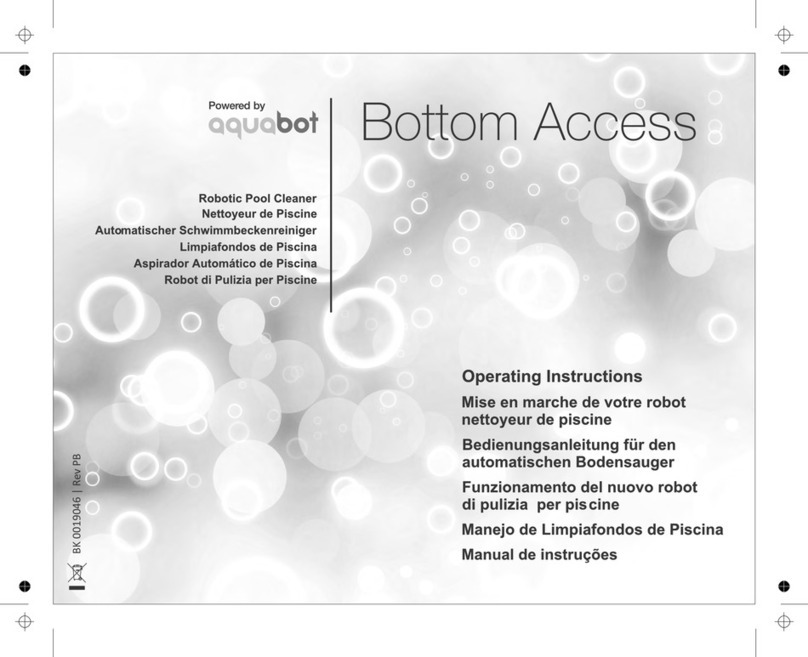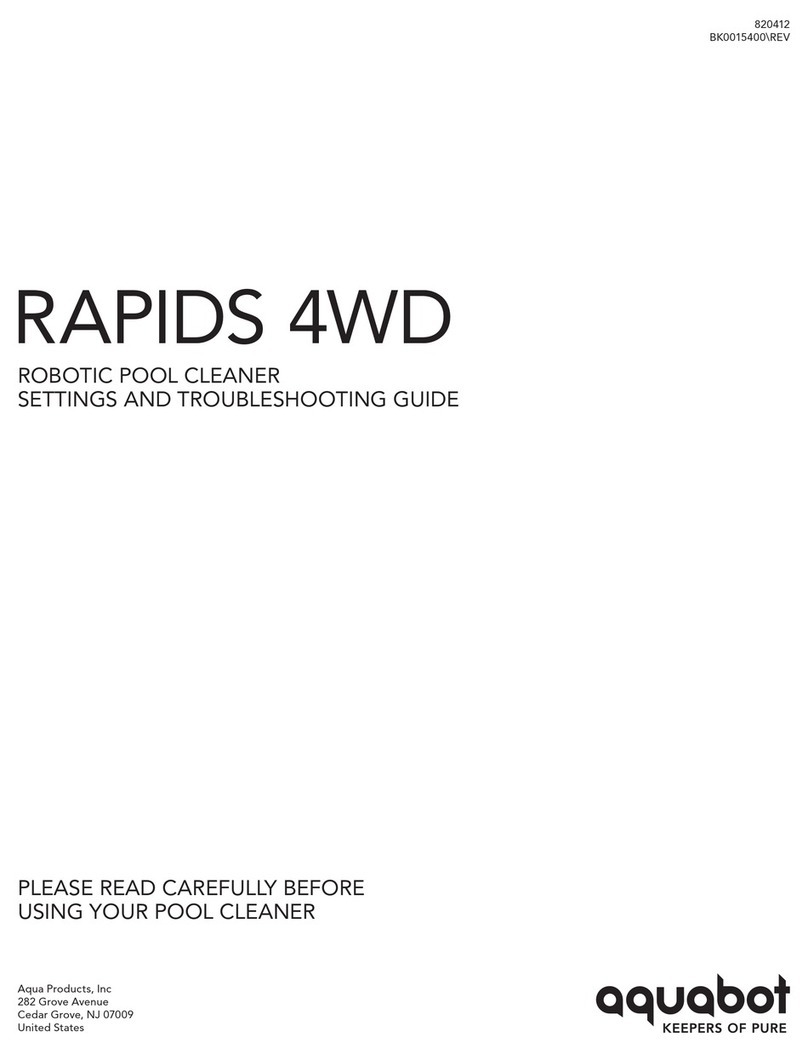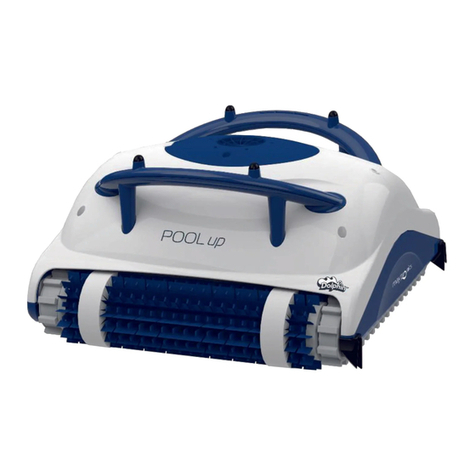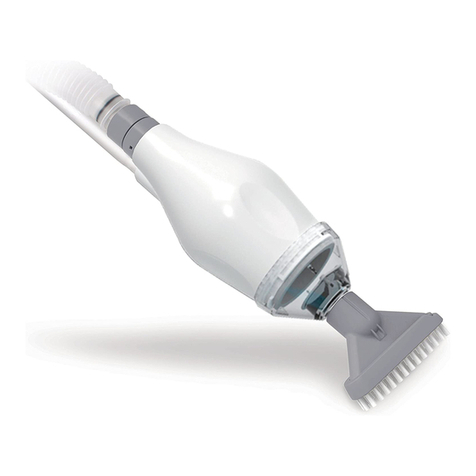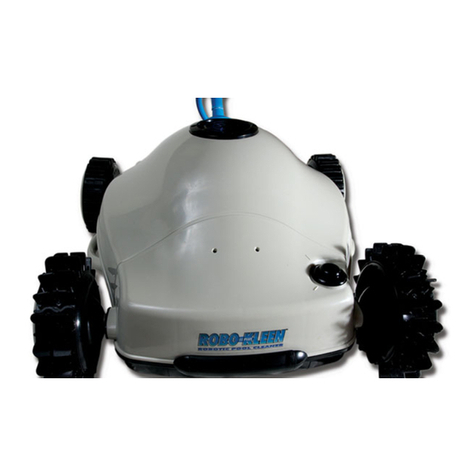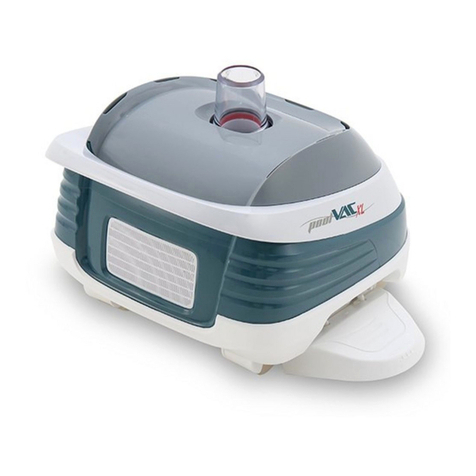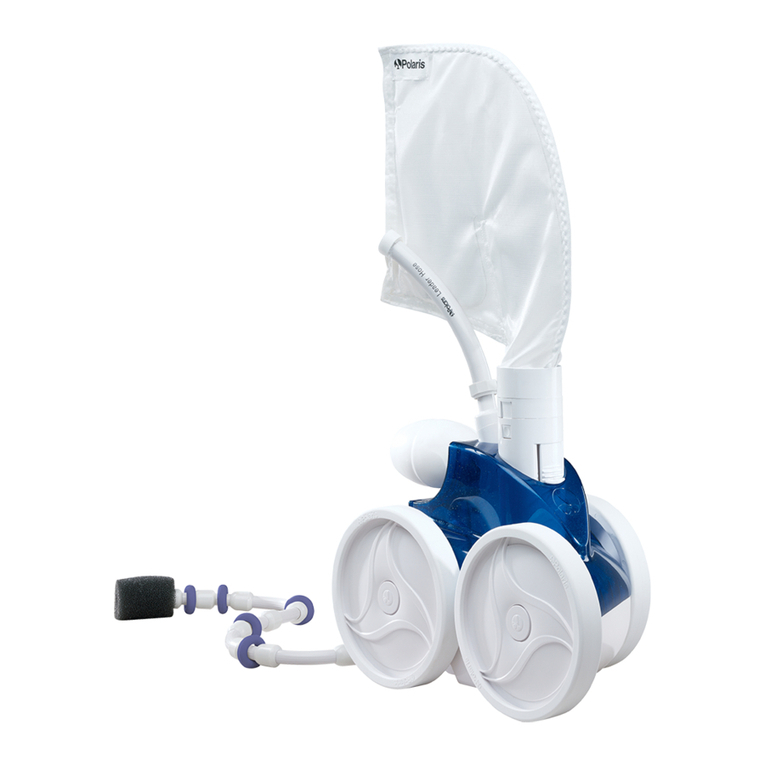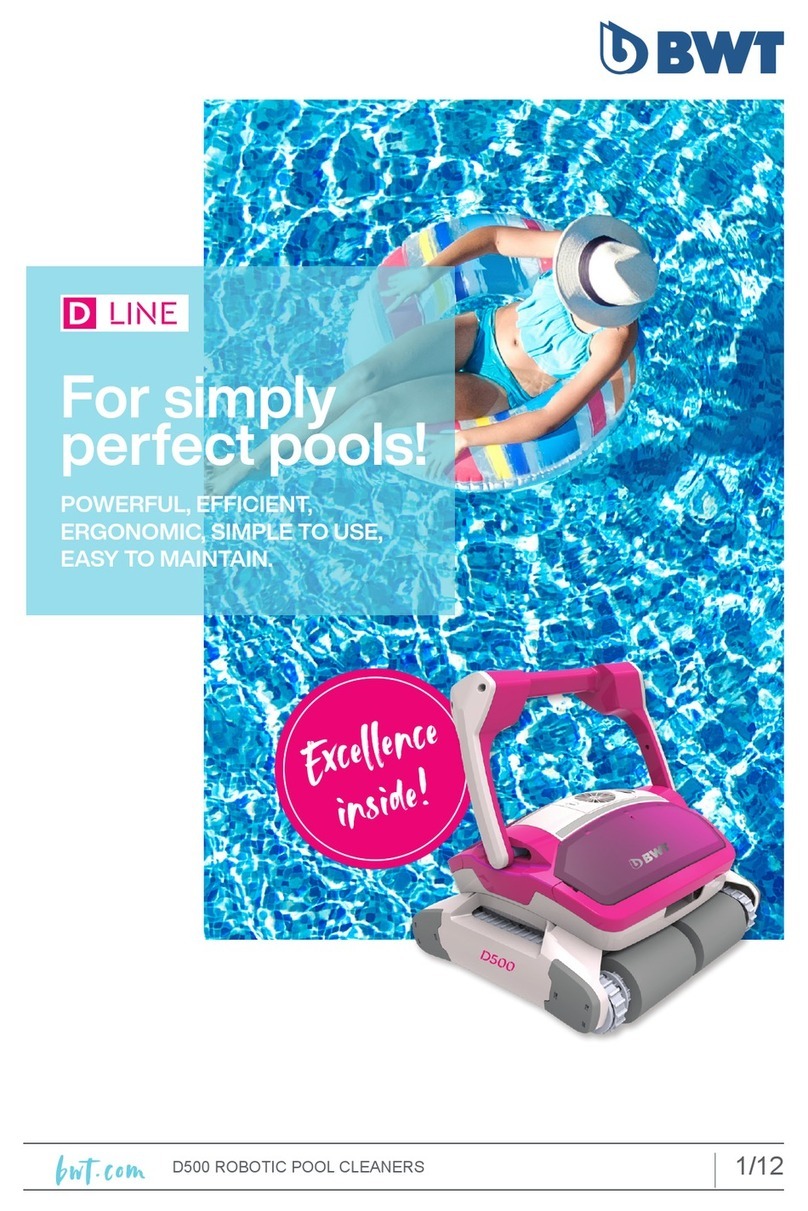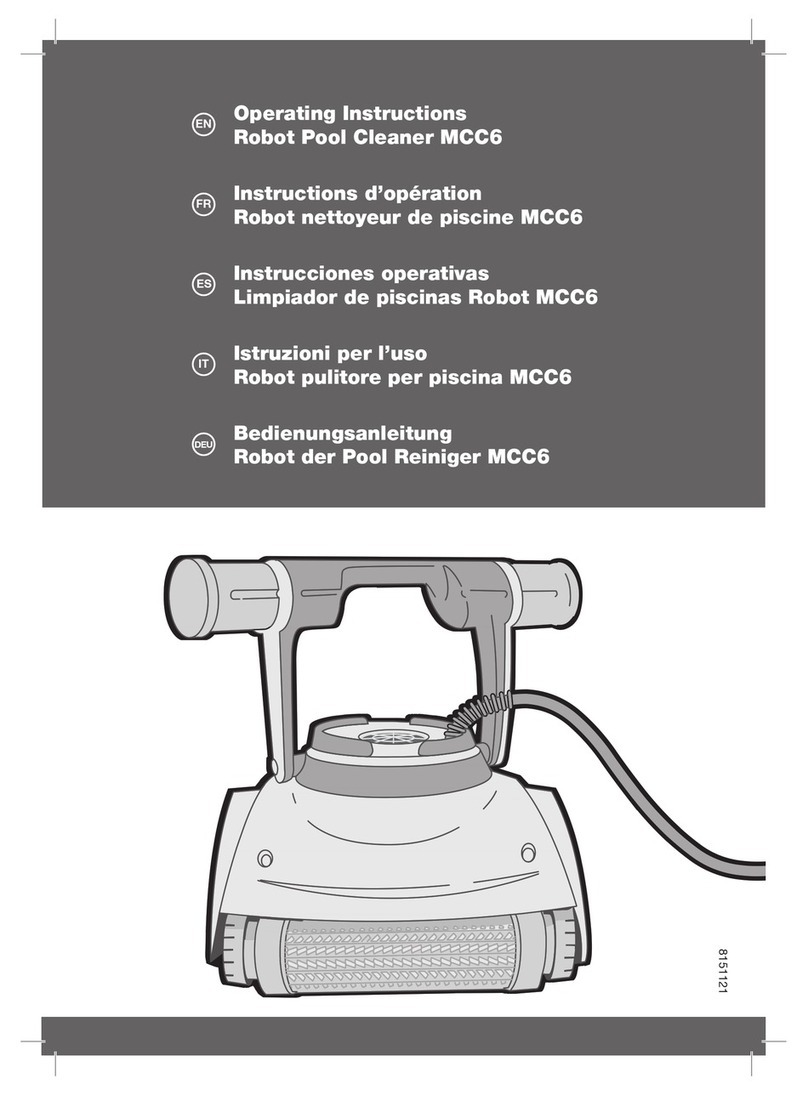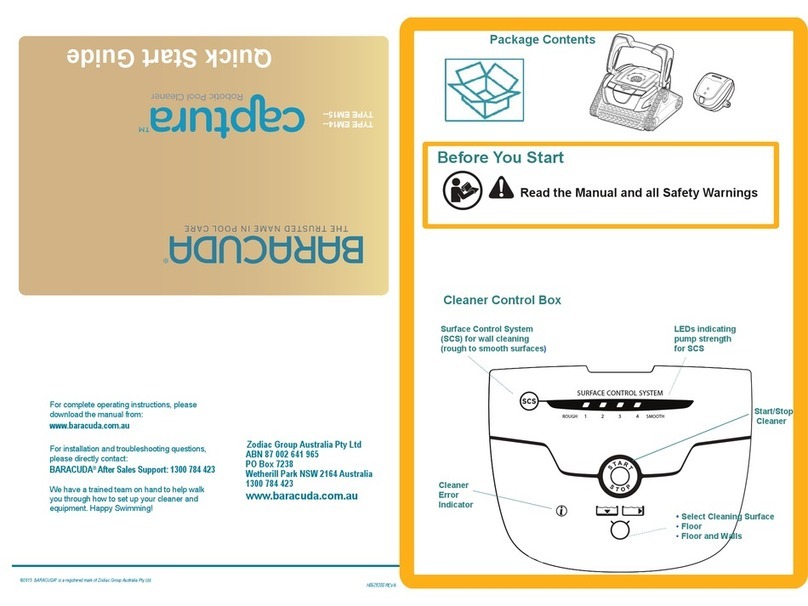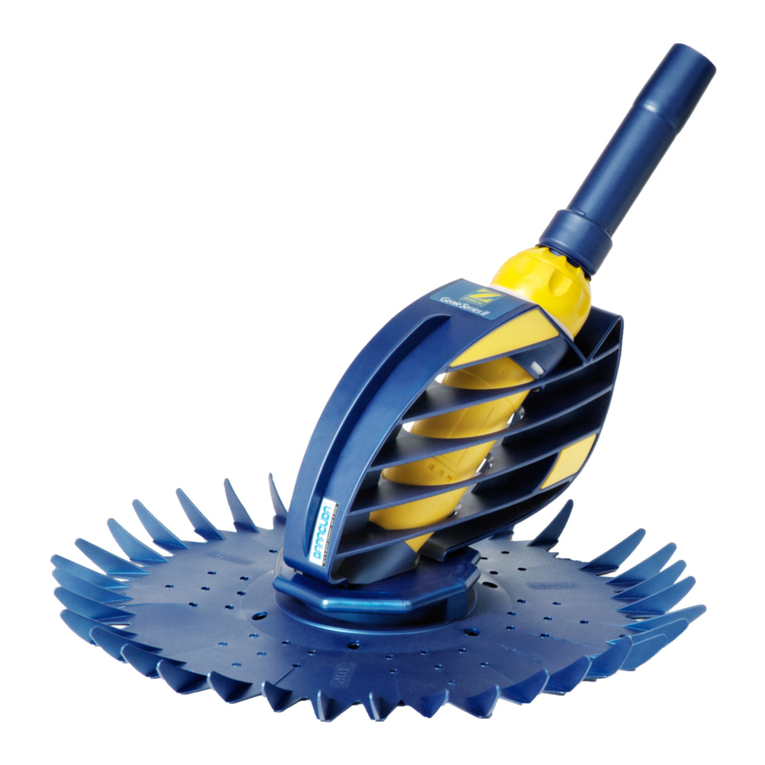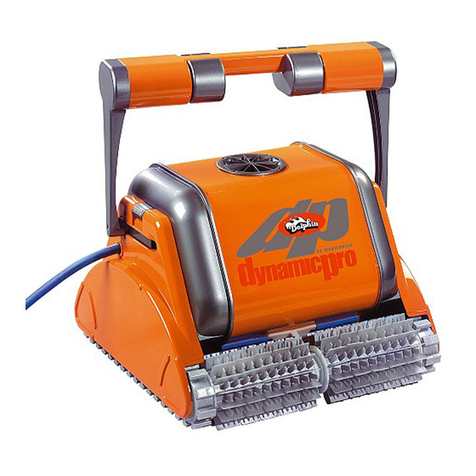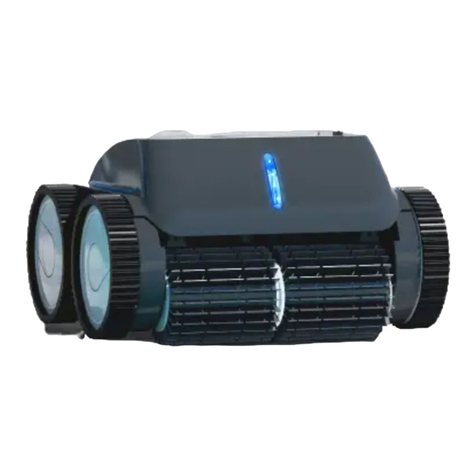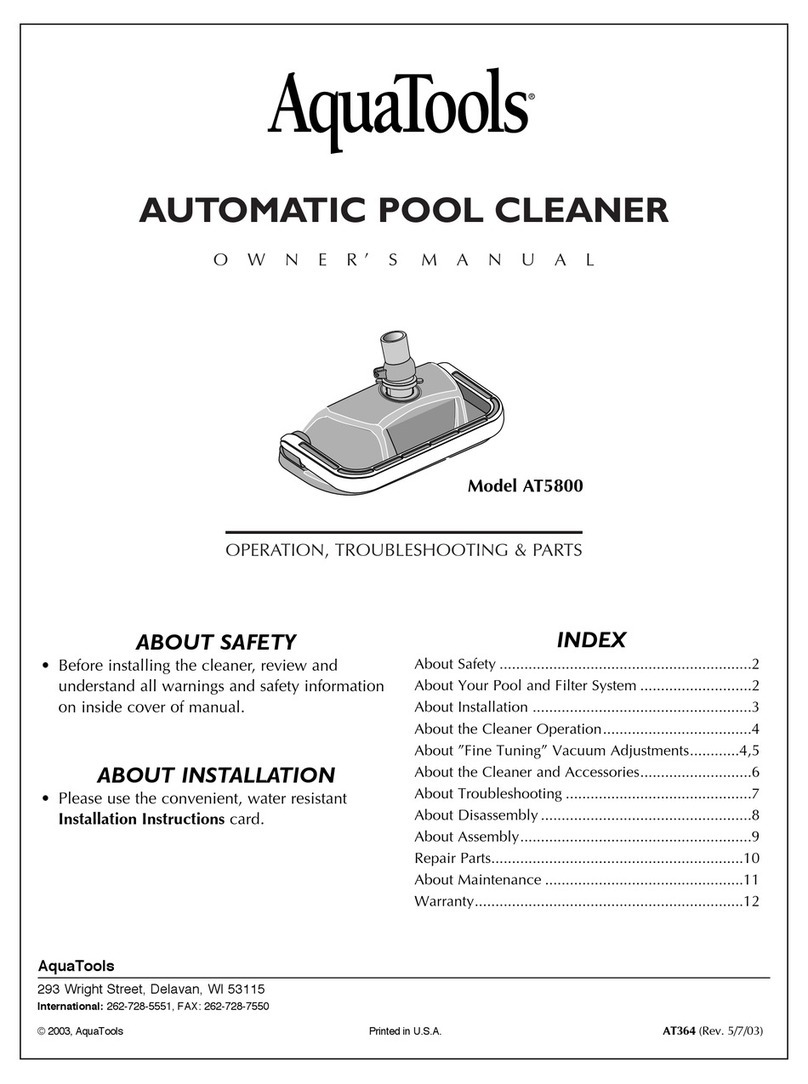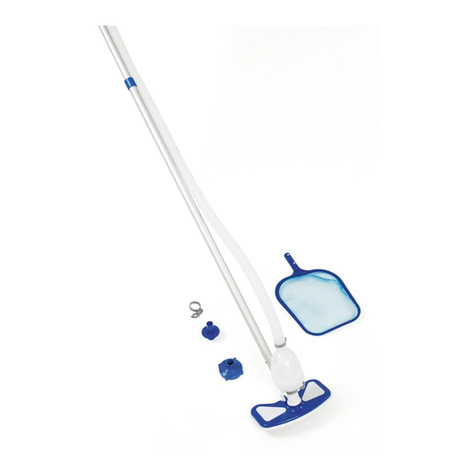
8
MAINTAINING YOUR POOL CLEANER
CLEANING AND CHANGING THE FILTER BAG
Thoroughly cleaning the Filter Bag (see step 4 below) after every use is the most important maintenance step you can take to ensure
optimum performance of your cleaner. The Filter Bag’s (Page 4, Fig. 3) holding capacity is large in comparison to all other brands of
independent pool cleaners, but far smaller than that of a pool’s main filter. Perhaps it is more important to know that your cleaner’s
Filter Bag can filter out particles down to 20 times smaller than what many main filters can. This means that the fine particles such as
algae and bacteria, invisible to the naked eye, which slip through the main filter and back into the pool to settle into the pores of the
pool’s surface, will be scrubbed loose and vacuumed up by your cleaner and retained in its Filter Bag. Therefore, although you may
see only a fine coating of dirt, the Filter Bag itself may be deeply saturated with ultra fine particulate matter from your pool’s large
surface area and the flow of water through it becomes restricted and suction is reduced. This will result in remaining dirt and debris
not being completely removed from the pool.
Also, strong water flow is required to force the cleaner against the wall when climbing. A dirty Filter Bag weighs the cleaner down,
making it hard for your cleaner to climb due to the added weight and reduced water flow. This lack of climbing may limit your cleaner’s
ability to cover the entire pool and pick up any more dirt. Therefore, it is important to clean the Filter Bag thoroughly (see step 4 below)
with every use so that the fine particles that get trapped within the fibers of the Filter Bag are removed.
To Clean The Filter Bag:
1. Unplug the Power Supply (Fig. 7a).
2. If your cleaner is in the pool, gently pull it toward you using
the Floating Cable (Fig. 7b) until the Handle is within reach.
Use the Handle (not the Floating Cable) to slowly pull your
cleaner out of the pool after allowing most of the water to
drain from your cleaner back into the pool.
IMPORTANT: Using the Floating Cable to lift the
cleaner out of the water will cause severe damage to
your cleaner and may result in costly repair!
Power Supply
GFCI / R.C.D.
outlet
Floating
Cable
Floating Cable Handle
3. Lay your cleaner on its back or side on a soft surface to avoid
scratching it. Individually pull each Lock Tab gently away
from your cleaner’s body to free the Bottom Lid (Fig. 8).
4. Remove the Filter Bag from the Wire Frame Bag Supports
(Fig. 9a), turn it inside out and with a high pressure garden
hose, wash off all the dirt from the inside out or dunk it in
a clean bucket of water and wring the Bag continuously
until the rinse water is clear. If necessary, you may machine
wash (Gentle Cycle / Cold Water only) the Bag with NO
DETERGENT. You may re-install the bag immediately or
allow it to air dry (never iron or machine dry the Filter Bag).
5. Re-install the Bag on the Wire Frames of the Bottom Lid
Assembly, making sure that the “felt” (soft) side of the Fine
Filter Bag is facing in. To ensure a proper fit of the Filter
Bag onto the Bottom Lid Assembly, locate the Small Label
near the Filter Bag’s elastic bottom. Position the Filter Bag
so that the Small Label is at the center of either long side of
the Bottom Lid (Fig. 9a). Then pull the elastic bottom over
each Wire (Fig. 9b) and slide the Filter Bag down along the
Wires until the Bag reaches the Bottom Lid. At that point
the Filter Bag’s elastic bottom should be stretched over the
plastic ridges located at the base of the Bottom Lid. This
holds the Filter Bag in place. Pull the Filter Bag corners to
the top corners of the Wire Frame and pull the extra Bag
material from each corner inwards along the top center of
the Wire Frames (Fig. 9b).
6. Re-install the Bottom Lid Assembly into the bottom of your
cleaner. Be sure that the Filter Bag’s fabric is not interfering
with the locking of the Lock Tabs and that you clearly hear
each Tab lock shut.
Figure 9bFigure 9a
Figure 8
Figure 7a
Figure 7b
Small Label
Wire Frame Bag
Support
Lock Tabs
Bottom Lid
Assembly
IMPORTANT: Although a Filter Bag may appear clean it is capable of microfiltering out particulates 20 times smaller
than what the naked eye can see! It is crucial to thoroughly clean the Bag with each use to ensure its ability to
properly cover and clean your pool!

